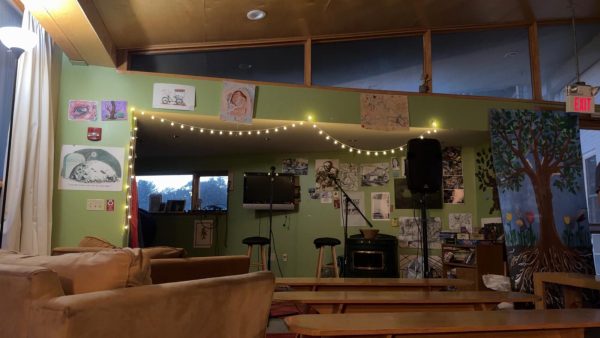Panel to Rename Hears Proposal
This month a Dickinson Ad Hoc Committee on Renaming will consider a proposal to rename three buildings on campus that are currently named for slave holders.
The proposal comes from the “Dickinson and Slavery: A Report to the Community” which was published in August 2019. The report was produced by Dickinson’s House Divided Project and has been endorsed by the President’s committee on inclusivity.
Professor of History Matthew Pinsker directs the House Divided Project, and serves as the faculty director of the report. The report uncovered that seven former slave holders are honored in some way on campus. “We then grouped those into two separate groups,” Pinsker said, “Those who renounced slave holding and those who didn’t.” Three of those slaveholders were unrepentant and the buildings Armstrong Hall, Cooper Hall, and Montgomery House, all are named after unrepentant slaveholders.
These were not always recognized on campus, according to the report. Montgomery Hall was named in the 1950s. The Armstrong and Cooper dorms were only named in the 1990s. Previously the buildings were reserved for fraternities.
Rebecca Stout ’19 discovered an internal memo from the 1991 naming process where a dean, who is no longer at the college, wrote “I see no point in naming a building after the first black or the first native American who attended Dickinson, nor the first women professor. Given the heritage of this college, that leaves me only with other dead white men to choose among.”
Yet the Dickinson and Slavery report found that there were multiple formerly enslaved people who were longstanding employees of the college yet had been forgotten. Janitor Henry Spradley was so beloved that the college closed for a day to hold services following his death. Robert C. Young, another janitor, briefly had the school desegregated in the 1880s when he had his son Robert G. Young admitted to the college.
Until recently, Noah Pinkney, who sold treats to students on campus for years, was the only African American person memorialized on campus. Pinsker said, “No one wants to erase the past but clearly some parts of our past have been erased.”
Cooper Wingert ’20, who was a student contributor to the report and is an intern at the House divided project, said “There was an important role that free or formerly enslaved people played as civil rights advocates in Carlisle, but they had been written out of our historical memory.”
Wingert said, “Thomas Cooper is here for 4 years but then leaves under a storm cloud. Robert Young was here 50 years – one of the longest employees in college history. Who do we want to recognize?” Dana Marecheau ’20, an intern with the House Divided Project, said that changing the name would help to recognize that “a plethora of people have gone through Dickinson.”
President Margee Ensign created an ad hoc committee to address this issue in December. The committee, which Provost and Dean of the College Neil Weissman announced in an email to the college, includes students, faculty and staff. They will meet on Jan. 31 to vote on a recommendation. The Board of Trustees will then consider the proposal, likely in their March meeting, and then “make an announcement by the end of the Spring semester,” Weissman said.
Though the committee will be meeting for the first time, Wingert said that “the committee has been having email discussions” and that “everyone on the committee is familiar with the report so that’s not an issue.”
This is not the first effort to change the name of the building. Student Senate passed a resolution during the 2018-2019 academic year calling for the renaming of Cooper Hall, after Cooper’s support for slavery came to light. The administration did not pursue any action at that time, however.
The report does not only recommend renaming the buildings. It also calls for developing “engaging public history and classroom resources that can help raise awareness about the contributions of past African American staff.” Marecheau, who identifies as black, said that “without people like Chuck Norris, without people like Esther Popel Shaw, I probably wouldn’t be here today.” Included in those efforts would likely be plaques or signposts about the renaming of the buildings.
Pinsker said of the goal, “It’s a long commitment, but it is one we’ve started and one we want to continue.” Wingert elaborated: “No historical project is ever finished – there is always more to discern.”
Marecheau challenged every student to come visit the House Divided project at its permanent exhibit on 61 N West Street. “It is important to see who made it possible for you to be here and for other students to be here. We shouldn’t be scared of difficult history,” Marecheau said.
Wingert agrees. “At its best, history forces us to engage in critical self-reflection it forces us to think about our institutional connection to slavery,” he said.




